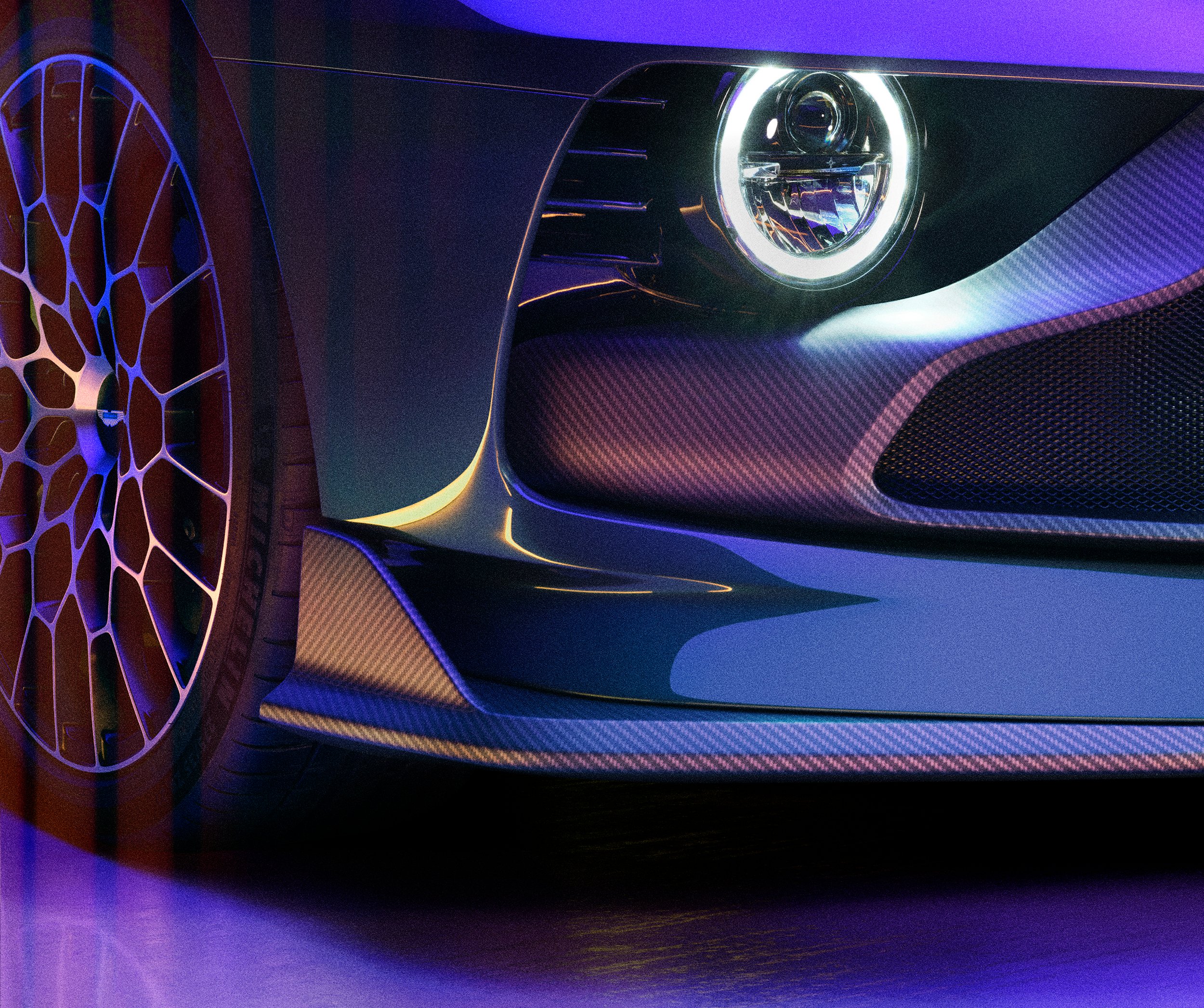
Advertisements
At the rear, the tail lamp graphic with six LED blades on each side recall the Valkyrie, while a full-width aluminium structure made from solid billet separates the upper and lower sections of the rear end. Here, a triple outlet exhaust system can be seen, and is made from lightweight stainless steel with a wall thickness of less than 1 mm, making for a 7 kg weight saving compared to a traditional setup.
The biturbo 5.2 litre V12 engine in the Valour outputs 715 PS and 753 Nm of torque, offering the same peak power as in the DBS Superleggera but with a 147 Nm reduction in peak torque compared to the series production car, which is specified with an eight-speed ZF automatic rear-mounted transaxle.
The driveline in the Valour gets a mechanical limited-slip differential to offer “a sense of direct analogue connection between car and driver”, while continuing to provide the safety net of electronic traction and stability control systems. Its three driver modes – Sport, Sport Plus and Track – have been tuned specifically for the limited-run model.




Also bespoke to the Valour are its suspension with adaptive dampers, springs and anti-roll bars which have been tuned specifically for this car, as does the wheel alignment for camber, castor and toe settings. Its customised body structure has front and rear shear panels, a rear suspension tower brace and fuel tank bracing in order to increase torsional and lateral stiffness.
Advertisements
Rolling stock is a set of 21-inch forged alloy honeycomb-design wheels, like those seen on the Victor as well as the DBS 770 Ultimate, and are shod in Michelin Pilot Sport S 5 tyres which are specific to Aston Martin; these measure 275/35 in front and 325/30 at the rear.
Aston Martin proclaims a cockpit of “uncommon simplicity and seductive tactility”, central to which is the manual transmission lever that is offered in a choice of machined aluminium, titanium, carbon-fibre or walnut for its gearknob, along with an exposed shift linkage to show its mechanical connection.




Advertisements
Upholstery materials contrast the past with the present, and the cabin features woollen tweed inspired by the 1959 Le Mans-winning DBR1 set against the carbon-fibre weave that is used in the lightweight performance seats, bespoke door cards, fascia air vents, upper centre console and transmission tunnel of the Valour.
A base selection of 21 paint colours is offered for a choice of hand-painted stripes and graphics designs, which may be applied to the car’s front, bonnet, sides and rear. Further personalisation is offered by its marque’s bespoke service, Q by Aston Martin.
These may include – and are not limited to – one-off liveries, exposed 2×2 twill carbon-fibre bodywork with a choice of tints in red, green or blue, painted wheels, Mokume carbon-fibre cabin detailing, as well as Johnsons of Elgin tweed and cashmere fabrics.
Production of the Aston Martin Valour will commence in the third quarter of this year, and customer deliveries are scheduled to begin in Q4 2023.
Looking to sell your car? Sell it with




